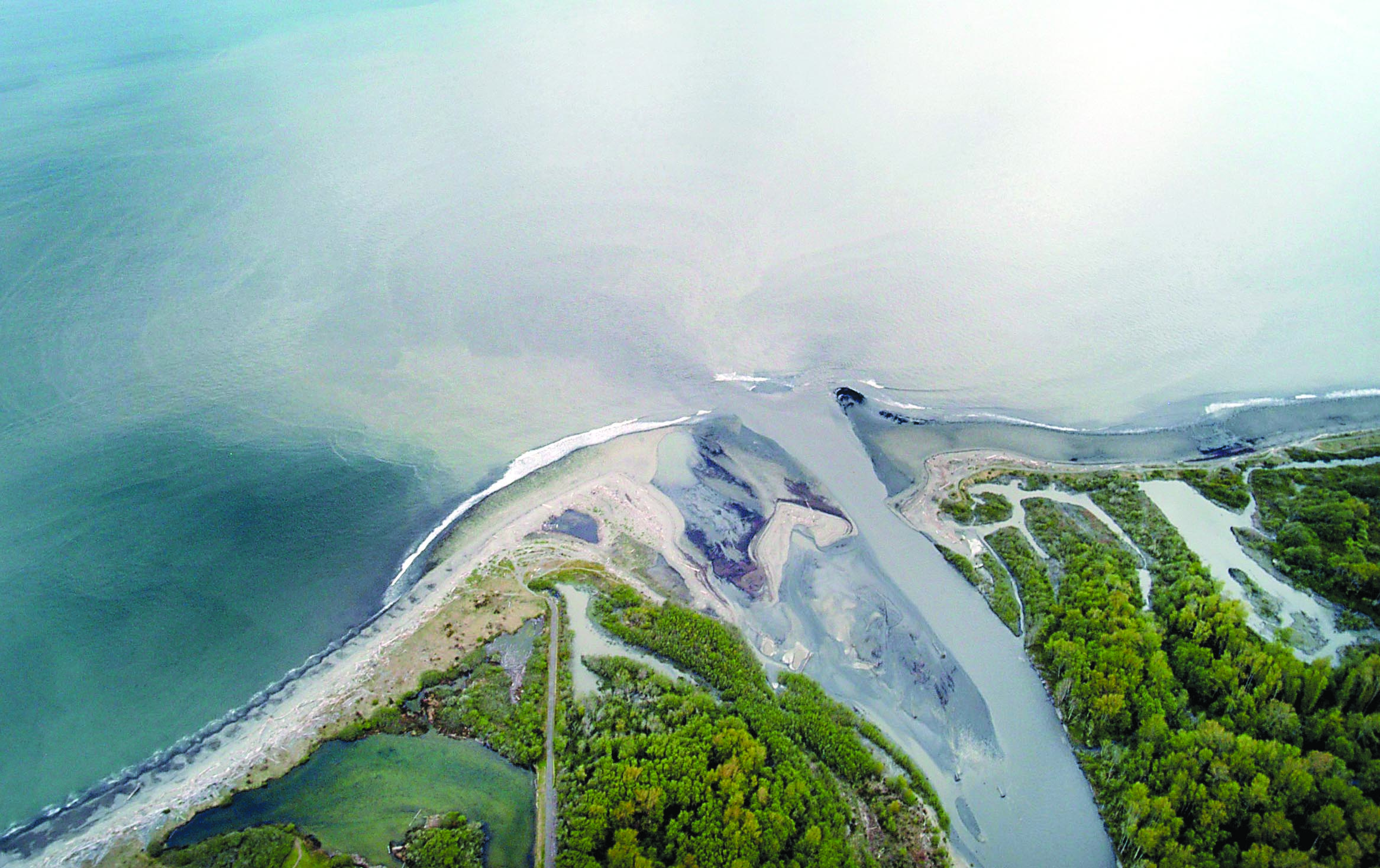A century’s worth of murky sediment from the newly liberated Elwha River has begun to form a palpable plume as it pours into the blue waters of the Strait of Juan de Fuca.
River flows have spiked in recent weeks as winter turned to spring and dam removal continues, causing a plume of silt visible to the naked eye.
“The river is definitely flushing a lot of its sediment, so people have been seeing that,” said Barb Maynes, Olympic National Park spokeswoman.
The sediment is being unleashed from the man-made reservoirs behind the 99-year-old Elwha and 85-year-old Glines Canyon dams west of Port Angeles.
The last remnants of the 108-foot Elwha Dam, which formed Lake Aldwell 5 miles upstream from the river’s mouth, were removed in March.
Its 210-foot counterpart, which forms Lake Mills 9 miles upstream, is about halfway gone as part of the $325 million federal project to restore the river’s legendary salmon runs.
The dams were built without fish ladders, blocking salmon migration to 70 miles of pristine habitat, much of which is in Olympic National Park.
Maynes said the median turbidity of the lower river was 1,300 Formazin Nephelometric Units, or FNU, on Thursday, with a peak instantaneous value of 1,680 FNU.
So far, the sediment is not killing fish.
“They’re not dying, but we can see some irritation on some of their gills,” said Robert Elofson, river restoration director for the Lower Elwha Klallam tribe.
The industrial water-treatment plant that feeds the state-of-the-art $16.4 million new fish hatchery at the tribe was built specifically for the dam removal project.
The facility was designed to accommodate 24,000 FNU, and last week’s average was 950 FNU, Maynes said.
“It seems to have peaked yesterday,” Maynes said Friday.
“We do anticipate — barring weather events and things like that — that the turbidity will begin slowing down and should drop through the summer because of lower flows, and also, the first fish window of the year starts on Tuesday.”
Already, fish are being seen in the river.
Last summer, about 600 coho were released into the Little River and Indian Creek — Elwha River tributaries between the dams — to shield them from high sediment loads coming down the main stem of the river.
Those fish produced about 100 salmon redds, or nests, and those salmon have hatched.
“We’re seeing fry in both streams now,” Elofson said.
Deconstruction of Glines Canyon Dam will cease Tuesday and remain that way through the end of June for a “fish window.”
Fish windows are intended to minimize the amount of silt in the water during fish migration.
Two more fish windows are scheduled this year from Aug. 1 through mid-September, and from Nov. 1 through New Year’s Eve.
The contractor, Barnard Construction, has until the fall of 2014 to complete the project, but work is going faster than expected.
Glines Canyon Dam, the tallest dam to be dismantled in U.S. history, could be gone as soon as next year.
Park officials expect the sediment levels to rise again as flows increase this fall.
Maynes said the lower reaches of the river already are showing signs of fine-grained sediment deposits in new islands and back-eddies.
Fine-grain sediment is a crucial component of salmon restoration, she said.
“That’s just what we were hoping for,” Maynes said.
After the dams are gone and the river is restored, between 300,000 and 400,000 salmon are expected to return to the Elwha River, Elofson has said.
The U.S. Geological Survey predicts about 10,000 cubic yards of sediment will be carried from the reservoir beds into the Strait of Juan de Fuca, about 60 percent of which is fine-grain silt and sand.
Scientists expect that material to build up the beaches around the mouth of the Elwha River, including Ediz Hook in Port Angeles.
“We’re not seeing a response at the nearshore yet, but we expect major sediment transport within five years of dam removal,” said Anne Shaffer, coordinator of the Elwha Nearshore Consortium, a group of citizens, scientists and managers dedicated to understanding and promoting the nearshore restoration of the Elwha dams removal.
“It’s still pretty early on.”
Scientist have yet to analyze most of the data they have collected in the early stages of the restoration project.
“The plume has really just started from a restoration standpoint,” Shaffer said.
“The thing that’s striking to me is that it’s been three weeks since the plume appeared, and it’s not going away.”
________
Reporter Rob Ollikainen can be reached at 360-452-2345, ext. 5072, or at rob.ollikainen@peninsuladailynews.com.
